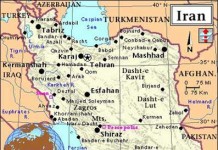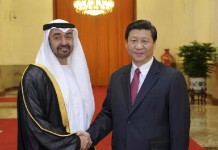Context
As discussed previously, the geopolitical situation of the Middle East, especially the impact of Arab Spring and how Israel and western powers deals with Iran’s nuclear program, will have a substantial impact on Pakistan and the Afghan reconciliation. With the European economic problems getting worse, the region of Asia Pacific is taking on an added emphasis. While Pakistan’s economic vision is premised on connecting to Central Asia, it should equally concentrate on the markets of the pacific realm, and should follow the model of India’s Look East Policy (LEP). While India needs Pakistan to connect with the markets of Central Asia, Pakistan’s Look East Policy goes through India.
The success of Pakistan’s future East Asia Policy would depend a great deal on how US and China reconcile in the Asia Pacific, and if economic cooperation would cause the security worries to recede.

Analysis
APEC, ASEAN, and EAS
APEC and ASEAN are the two main bodies facilitating cooperation between nations of the Asia Pacific region. APEC is the Asia Pacific Economic Community, established in 1989 to help facilitate the growth and community of ‘member economies’. There are 21 member economies (countries) today, with the original 12 countries consisting of the US, Australia, Canada, New Zealand, Japan, Indonesia, Singapore, Malaysia, Brunei, Thailand, the Philippines and the Republic of Korea. Since then, Chile, Peru, Mexico, China, Russia, Vietnam, Hong Kong, Papua New Guinea and Chinese Tai Pei (Taiwan) have also joined.
ASEAN, on the other hand, is the Association of South East Asian Nations, created in 1967 with a much narrower charter than APEC, and only five founding members: Thailand, Indonesia, Singapore and the Philippines. Today there are 10 members of ASEAN, with Brunei, Cambodia, Laos, Vietnam and Myanmar joining at various stages between 1984 and 1999. ASEAN is much more focused on regional stability and community with initiatives involving education, cultural exchanges, research and technological advancement. Economic interests are of course a part of ASEAN; however, they are far less articulated than in APEC.
The future of APEC is widely contended between member economies. For China, the current, non-binding and voluntary nature of the organization is perfectly suitable for its needs, and the country has expressed a desire that the ‘APEC Approach’ continue in its current course. The benefits China has derived from being a member of APEC are manifold, and include the development of over 14 bilateral Free Trade Agreements (FTA) since becoming a member. Japan on the other hand, partly because of the Chinese economic domination in the region is pushing for a more institutionalized and enforceable set of governing principles for the organization.
The US shares this view with Japan to a certain extent with 60% of its export heading to APEC member economies. The US is in direct opposition to China, in that the so-called ‘noodle bowl of agreements’ that has served China so well. The US desires APEC to become a Free Trade Area, so that the more than 150 bilateral FTAs signed between APEC members and other regional nations (to the exclusion of the US) are subsumed under the overarching APEC Free Trade Area.
The emerging American regional security architecture in East Asia envisions containment of China, with support from Japan, Australia, India and South Korea. There are increasing indications that US is now moving aggressively towards this goal. President Obama gave a clear hint on the new US Strategy during his visit to Australia, where he also announced plans to expand military presence in the country,
“As we end today’s wars, I have directed my national security team to make our presence and missions in the Asia-Pacific a top priority,” he said. “As a result, reductions in US defense spending will not — I repeat, will not — come at the expense of the Asia-Pacific.”
Pakistan-India Dynamics
Pakistan is looking at being on the fringe of an increasingly integrated Asia Pacific. The endemic conflict in Afghanistan and traditionally strained relations with India, have limited Pakistan’s trading options. The security concerns have generally overridden the benefits of economic cooperation. This context has forced the country to depend on more distant markets of Europe and North America while spurring smuggling locally.
Unable to look West, India’s strategists naturally looked to integrate with the East, for which it had a geographic advantage. Initially India’s LEP was directed at South East Asian (SEA) nations like Malaysia, Singapore and Indonesia and was specifically targeting the ASEAN organization as a means of thawing relationships that previously had frosty undertones (Cold War era). In general, the India’s LEP has been quite successful in dealing with ASEAN; although full membership has not been granted, in 1995 India was made a full dialogue partner in ASEAN and in 1996 was made a member of the ASEAN Regional Forum (ARF).
India had more success with the East Asia Summit; it was a founding member of the East Asia Summit (EAS) in 2005. Although India, as an emerging economic power in the region and an Asian country, had good reason to be included in the EAS for these reasons alone, many ASEAN members only acceded to India’s inclusion in order to counterweight the Chinese. This year, US and Russia have also joined the EAS formally. The stature of EAS is thus rising, although a lack of clear purpose and overlap with ASEAN Regional Forum has prevented it from being a more influential organization in the past.
With Pakistan granting India the MFN status, the easing of tensions could lay the foundation for better access to the Indian markets and beyond. Pakistan has sought inclusion into ARF and ASEAN and despite the efforts of some of Pakistan’s friends in the region; India’s established role in the organizations has kept Pakistani participation and integration minimal. Just as India’s nod was crucial in matters related to EU, it could also pave the way for a better access to the Asia Pacific.
Conclusion
Under the current circumstances, the success of Pakistan’s East Asia policy is dependent on good relations between US and China. On the surface, the American vision for the region, the New Silk Road, also attempts to achieve better connectivity between Central Asia, Pakistan and India. However, it also attempts to exclude Iran, a security concern for US.
On the other hand, India and Pakistan, including Iran, becoming full member of the Shanghai Cooperation Organization (SCO), may also lead to a fuller regional integration. However, this complicates US-India strategic partnership.
The economic and security policies are obviously intertwined and one cannot be at the cost of the other. While Pakistan gave precedence to economic factors in granting India the MFN status, in the Asia Pacific, security concerns appear to be taking the lead. This could ultimately complicate the Pakistan-India détente.
India’s road to Central Asia markets passes through Pakistan and India’s assistance may be crucial for Pakistan in getting access to the East Asian markets. The budding economic cooperation between Pakistan and India could make them realize the true potential of their partnership, irrespective of what transpires between US and China.



